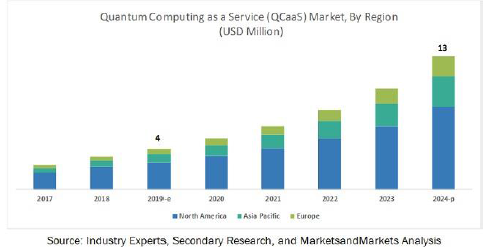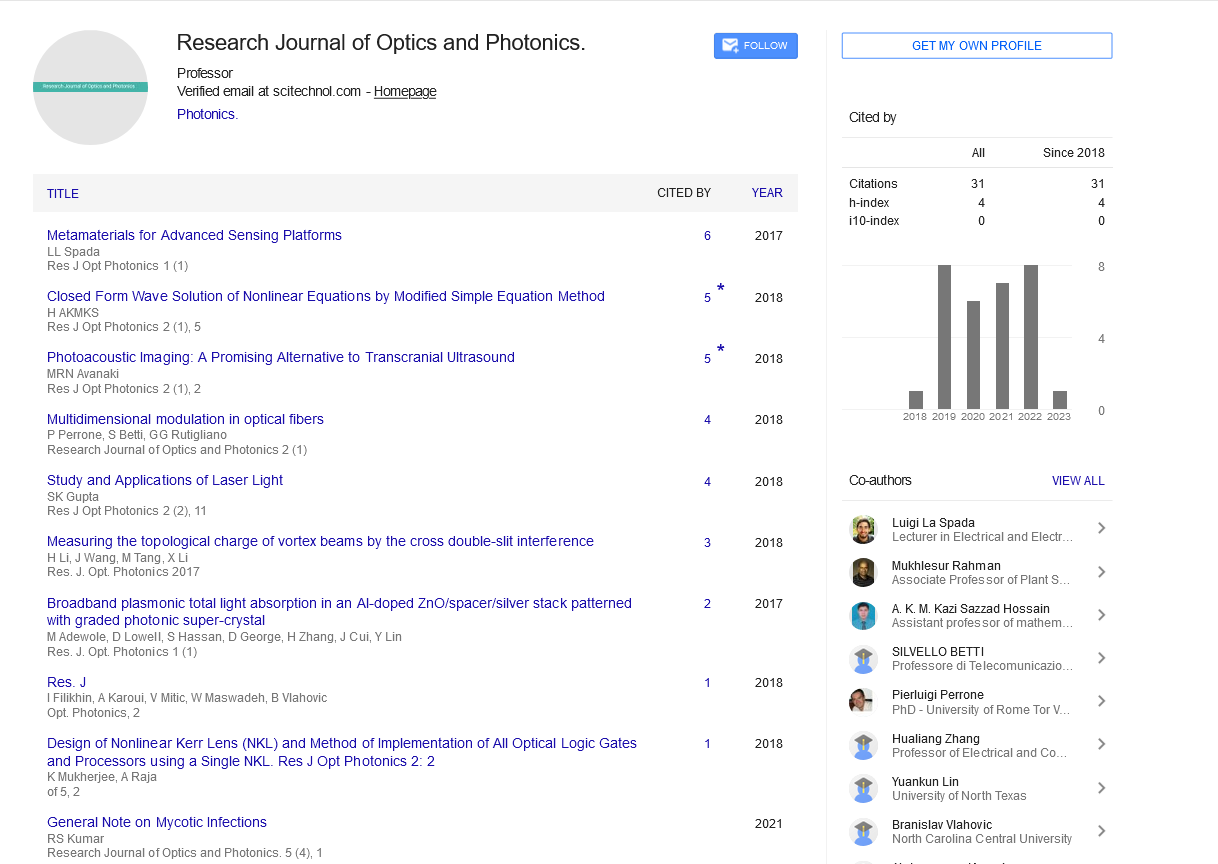Market Analysis, Res J Opt Photonics Vol: 4 Issue: 3
2020 Market Analysis of Optoelectronics and Quantum Physics Conference
Mustafa Khamis
Professor, Department of Biology, Chemistry and Environmental Sciences, College of Arts and Science, American University of Sharjah, United Arab Emirates, E-mail: mkhamis@aus.edu
Abstract
Keywords: Quantum Physics
The overall quantum computing market is expected to grow from USD 93 million by 2019 to USD 283 million by 2024 at a CAGR of 24.9%. The Quasar market is expected to grow from USD 4 million by 2019 to USD 13 million by 2024 at a CAGR of 26.8%. The need for robust computing that has the potential to overcome the difficulties involved in discovering drugs to target specific cancers and evaluating portfolio risk prominently contributes to the market growth.

To know about the assumptions considered for the study, download the pdf brochure
Automotive to lead quantum computing market for consulting solutions during forecast period
Among the end-user industries considered, space and defense is the largest contributor to the overall quantum computing market, and it is expected to account for a maximum share of the market in 2019. The need for secure communications and data transfer, with the demand in faster data operations, is expected to boost the demand for quantum computing consulting solutions in this industry. The market for the automotive industry is expected to grow at the highest CAGR from 2019 to 2024.
Material simulation application is expected to lead quantum computing market for consulting solutions during forecast period
The demand for optimization and material simulation applications on quantum computers is likely to increase rapidly in the coming years. The demand to solve complex problems with simultaneous operations, and simulate molecules and materials to gain an accurate output is helping these applications to find opportunities in end-user industries such as automotive, chemicals, energy and power, and healthcare. The extensive R&D and growth strategies adopted by the companies and research labs operating in the ecosystem are likely to foster the growth of the quantum computing market in the coming years.

Cloud computing market size is likely to witness significant gains from 2016 to 2023. Greater scalability coupled with faster access to infrastructure are anticipated to surge the demand growth.
North America, especially U.S. cloud computing market size accounted for over 50% total share in 2015. SaaS services, including collaborations, content & communications along with customer relationship management is expected to boost regional revenue generation over the forecast period.
Cloud computing is an internet based technology that serves centralized data to remote devices connected through intranet or internet. It is a network where an application or program runs on a server and can be shared across several devices such as laptops, smart phones and personal computers. It ensures consumption-based billing and is also expected to witness significant adoption in several end use sectors. The above mentioned factors are likely to boost the industry demand over the forecast period. Strong outlook on the health care cloud computing market size, likely to exceed USD 13 billion by 2023, should drive industry demand.
The technology enables exploitation of data in order to sustain business conclusions while maintaining the IT cost down. In addition, it enables companies to leverage platform as a service for application deployment. The technology is mainly deployed by key players in applications such as Google Inc. for Gmail, Drop box Inc. for their Dropbox Storage, Google auto back up, Facebook, Ever note and Skype. The technology is mainly utilized in social media and healthcare sectors as it facilitates the sectors to reduce their capital expenditure by eliminating the cost of IT Infrastructure.
Large organizations makes use of private clouds in order to ensure reliability and security, while the smaller organizations requires public cloud services as they are cost efficient in nature. The conventional IT infrastructure involves developing, testing and deploying applications, which provides high investment as well as underutilization of resources. However, concerns regarding privacy, data access and security are the foremost factors hindering the demand growth over the coming few years.
The industry can be segmented on the basis of deployment models which include public cloud, hybrid cloud and private cloud. The industry can also be bifurcated on the basis of services which include software as a service (SaaS), advertising as a service (AaaS), business process as a service (BPaaS), platform as a service (PaaS), and infrastructure as a-service (IaaS). The industry can be segregated by IT capability into business processes, application and system & application infrastructure. Key regions occupying significant cloud computing market share include Asia Pacific, North America, Europe, MEA and Latin America. Business processes can be further segmented into e-commerce, human resources and payment processing and accounted for more than 70% of the total industry share in 2014.
India cloud computing market size was valued over USD 1 billion in 2014. Advertising as a service market accounted for highest share owing to extensive usage in online advertising. Rising growth in e-commerce sector is also likely to boost the demand.
Hybrid cloud accounted for around 58% of industry share in 2014. Public cloud accounted for over 30% and private cloud accounted for about 5% in the same year. Hybrid cloud computing service model provides solution by combining public and private clouds. It integrates in-house IT infrastructure with other services and products to accomplish unique needs of the customers.
Saas cloud computing market share accounted for over 49% revenue in 2014, IaaS accounted for around 28% and Paas accounted for over 18%. SaaS is utilized for the distribution of software so that the consumers can access over the Internet. It hosts the applications at its data center and a user contacts it with the help of any standard web browser.
The major players holding the global cloud computing market share include Amazon, Akamai Technologies, Hewlett Packet, VM-Ware, Yahoo, CA Technologies, Caspio and Dell among others. Major competitors for PaaS include Microsoft, Google and IBM among others. Key SaaS players are Google, Cisco, Demandware, Adobe and Hotmail among others. IaaS providers include Akamai, Joyent and Go Grid among others.
-
Global meet on Optoelectronics and Quantum Physics Sciences
Montreal, Canada
 Spanish
Spanish  Chinese
Chinese  Russian
Russian  German
German  French
French  Japanese
Japanese  Portuguese
Portuguese  Hindi
Hindi 